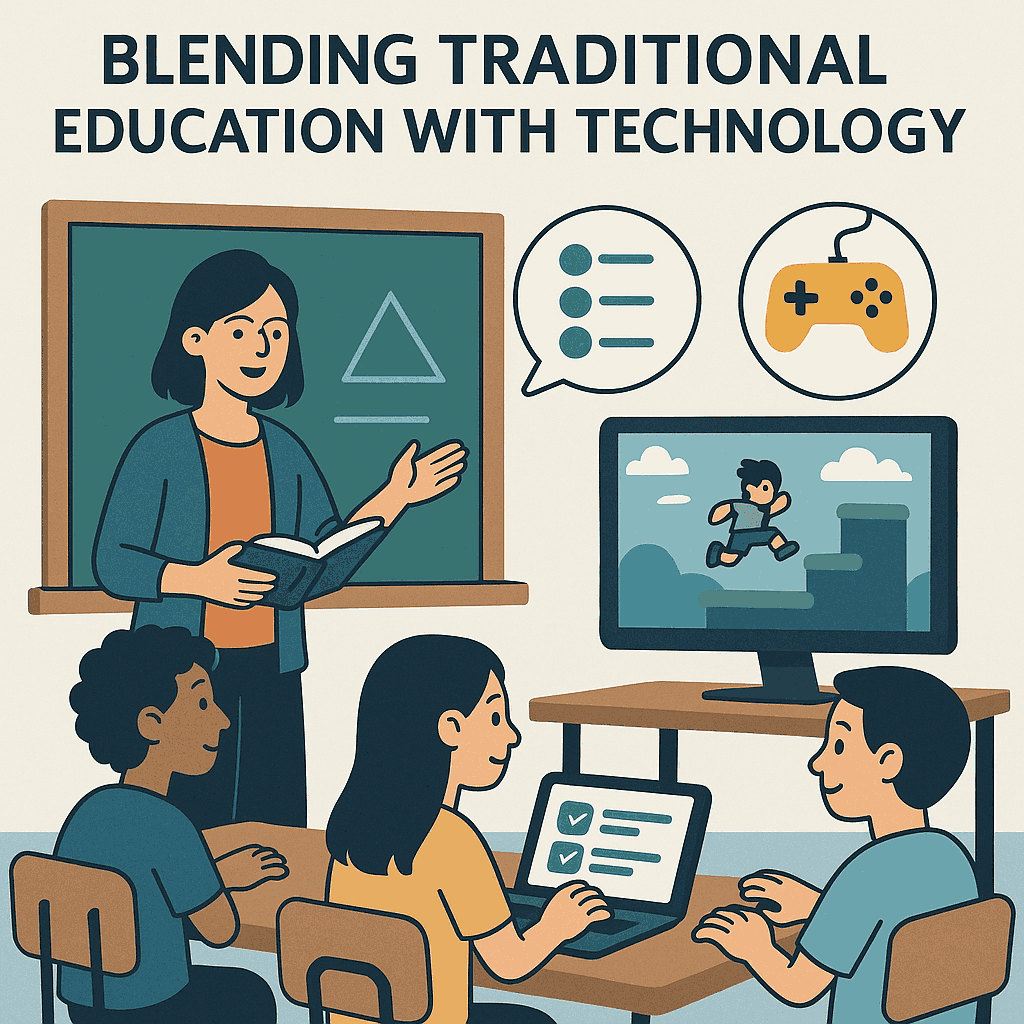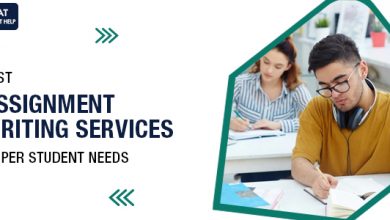
Generation Z is one of the most tech-savvy generations in history, and their digital habits have reshaped how they engage with education. Instead of separating students from technology, educators are embracing it by integrating game based learning into the classroom to support cognitive development and motivation.
In today’s digital era, gaming is no longer just a form of entertainment—it’s a powerful educational tool. Games foster critical thinking, collaboration, creativity, and digital literacy, all of which are essential skills in the modern world. With students spending increasing amounts of time online, harnessing their interest in games provides a unique opportunity to enhance learning outcomes.
Rather than resisting screen time, schools are finding innovative ways to channel that energy into purposeful, goal-oriented experiences. Educational games encourage students to become active participants in their learning, improving engagement, retention, and overall academic performance. This shift in approach marks a significant evolution in the way learning is delivered and received in the 21st-century classroom.
Blending Traditional Education with Technology

The fusion of traditional teaching methods and digital tools is transforming how knowledge is delivered and retained in classrooms. Instead of replacing traditional instruction, game-based learning complements and enhances it, creating a more dynamic and inclusive learning environment. This blended approach leverages the strengths of both systems—structure and familiarity from traditional education, and interactivity and engagement from digital learning.
Key benefits include:
- Greater Student Engagement: Games capture students’ attention through visuals, interactivity, and immediate feedback, making lessons more immersive than static lectures or worksheets.
- Differentiated Instruction: Educational games often include adjustable difficulty levels or adaptive pathways, allowing students to progress at their own pace and giving teachers the flexibility to support individual learning needs.
- Reinforcement Through Repetition: Games allow for repeated practice in an enjoyable format, which reinforces learning without the monotony often associated with drills or revision exercises.
- Data-Driven Instruction: Many educational platforms offer analytics and dashboards that track student progress, helping educators identify gaps, tailor instruction, and measure mastery in real time.
- Real-World Skill Application: Games often simulate real-life scenarios, helping students apply theoretical knowledge in practical, problem-solving contexts.
This approach also fosters growth mindsets in learners. In traditional environments, failure may feel discouraging; in games, failure is often part of the process, encouraging learners to try again and improve their strategies. Students learn to view mistakes not as setbacks but as learning opportunities.
Teachers play a vital role in this blended environment. They serve as facilitators who guide gameplay, link it to curriculum objectives, and ensure it remains purposeful. Games can be seamlessly integrated into different instructional models:
- As a warm-up activity to activate prior knowledge
- Mid-lesson engagement to reinforce understanding
- Exit tickets or formative assessments to check comprehension
- Homework or project-based learning tools to extend learning beyond the classroom
When thoughtfully implemented, blending traditional education with gaming strategies creates an environment that is responsive, student-centered, and future-ready.
The Rise of Gaming in Education
Over the past decade, gaming has gained widespread acceptance as a legitimate and powerful educational tool. Schools and educators are increasingly integrating game-based learning into their teaching strategies to keep students engaged and motivated. Unlike passive learning methods, educational games provide interactive experiences that require critical thinking, problem-solving, and collaboration.
They allow students to explore concepts actively, rather than simply memorize facts. As digital natives, today’s learners are naturally drawn to technology-driven content. By meeting students where they are—on digital platforms—educators can create more inclusive and effective classrooms that foster both academic achievement and real-world skills.
Cognitive benefits of educational gaming:
- Enhances short-term memory, reasoning, and critical thinking
- Encourages decision-making through real-time challenges
- Provides opportunities to build and apply complex strategies
- Offers flexible learning that adapts to students’ pace and understanding
- Acts as a classroom morale booster by increasing positivity and collaboration
Game design considerations:
- Align with curriculum goals (e.g., history, science, math)
- Include social elements and teamwork
- Offer scalable difficulty for various learning levels
Social and Emotional Learning Through Gaming
Beyond academics, gaming plays a crucial role in supporting social and emotional learning (SEL). Educational games often require teamwork, cooperation, and communication—skills that help students develop empathy, patience, and conflict resolution strategies. In multiplayer or collaborative settings, students learn to value others’ perspectives, listen actively, and offer constructive feedback.
These experiences build emotional resilience and foster a sense of belonging in the classroom. Games also help students manage frustration and regulate emotions by offering safe environments to fail, reflect, and try again. This process encourages a growth mindset and helps learners develop perseverance, adaptability, and healthy self-confidence.
SEL-focused benefits of gaming:
- Promotes teamwork and collaboration
- Helps students develop empathy and emotional resilience
- Builds leadership and communication skills
- Provides safe opportunities to handle failure and success constructively
- Encourages inclusivity by offering alternate participation paths for shy students
Developing Digital Literacy Through Gaming
In today’s tech-driven world, digital literacy is essential, and game-based learning provides an engaging way to build these critical skills. Educational games introduce students to essential digital functions like typing, navigating interfaces, understanding basic coding, and safely exploring online environments.
As students play, they naturally develop problem-solving abilities, learn how to follow digital instructions, and build confidence in using technology. Games also teach important digital ethics—like responsible internet use, cybersecurity awareness, and respecting others in virtual spaces. By gamifying these lessons, students become fluent in technology while enjoying the learning process, preparing them for future academic and career success.
Digital literacy advantages:
- Teaches keyboard, mouse, and software navigation skills
- Enhances problem-solving and creative thinking in real-time scenarios
- Encourages ethical technology use and online responsibility
- Fosters collaboration in virtual environments
- Improves adaptability and confidence in using new tech tools
Gamified Assessments and Performance Tracking
Gamified assessments are revolutionizing how educators measure learning progress by turning evaluation into an engaging experience. Unlike traditional tests, gamified assessments offer real-time feedback, visual progress indicators, and achievement rewards like points, badges, or levels. These elements boost motivation and reduce test anxiety, encouraging students to take ownership of their progress.
Teachers benefit from built-in performance tracking tools that provide actionable insights into each student’s strengths, weaknesses, and learning pace. This data-driven approach enables personalized instruction and timely intervention. Gamification also supports formative assessment, helping educators continuously evaluate comprehension during the learning process—not just at the end.
Benefits of gamified assessment:
- Real-time progress tracking with instant feedback
- Personalized learning paths and adaptive difficulty
- Built-in motivators like badges, rewards, and achievements
- Clear indicators for teachers to identify student strengths and weaknesses
- Encourages self-directed learning and goal setting
Preparing Students for Future Careers
Game-based learning equips students with essential skills that align with the demands of the modern workforce. Today’s careers require more than academic knowledge—they call for creativity, adaptability, digital fluency, and problem-solving. Educational games help students develop these competencies by immersing them in scenarios that mirror real-world challenges.
Whether managing virtual resources, making strategic decisions, or collaborating on missions, students practice critical thinking, time management, and teamwork. Many games also simulate environments like startups, science labs, or business operations, introducing students to career pathways early on. This hands-on exposure builds confidence, resilience, and a readiness to navigate complex, tech-driven careers.
Career-readiness skills gained from gaming:
- Strategic thinking and resource management
- Comfort with digital platforms and tools
- Teamwork and leadership in virtual projects
- Strong communication and presentation abilities
- Persistence, grit, and iterative problem-solving
Final Say: Gaming as a Catalyst for Responsibility and Growth
Game-based learning transforms students from passive listeners to active learners who take charge of their progress.
Why it works:
- Simulates real-life responsibility through cause-and-effect decisions
- Builds a sense of ownership over educational outcomes
- Encourages collaboration and shared accountability
- Keeps learners motivated by setting goals and earning rewards
- Promotes independence and boosts overall classroom energy




